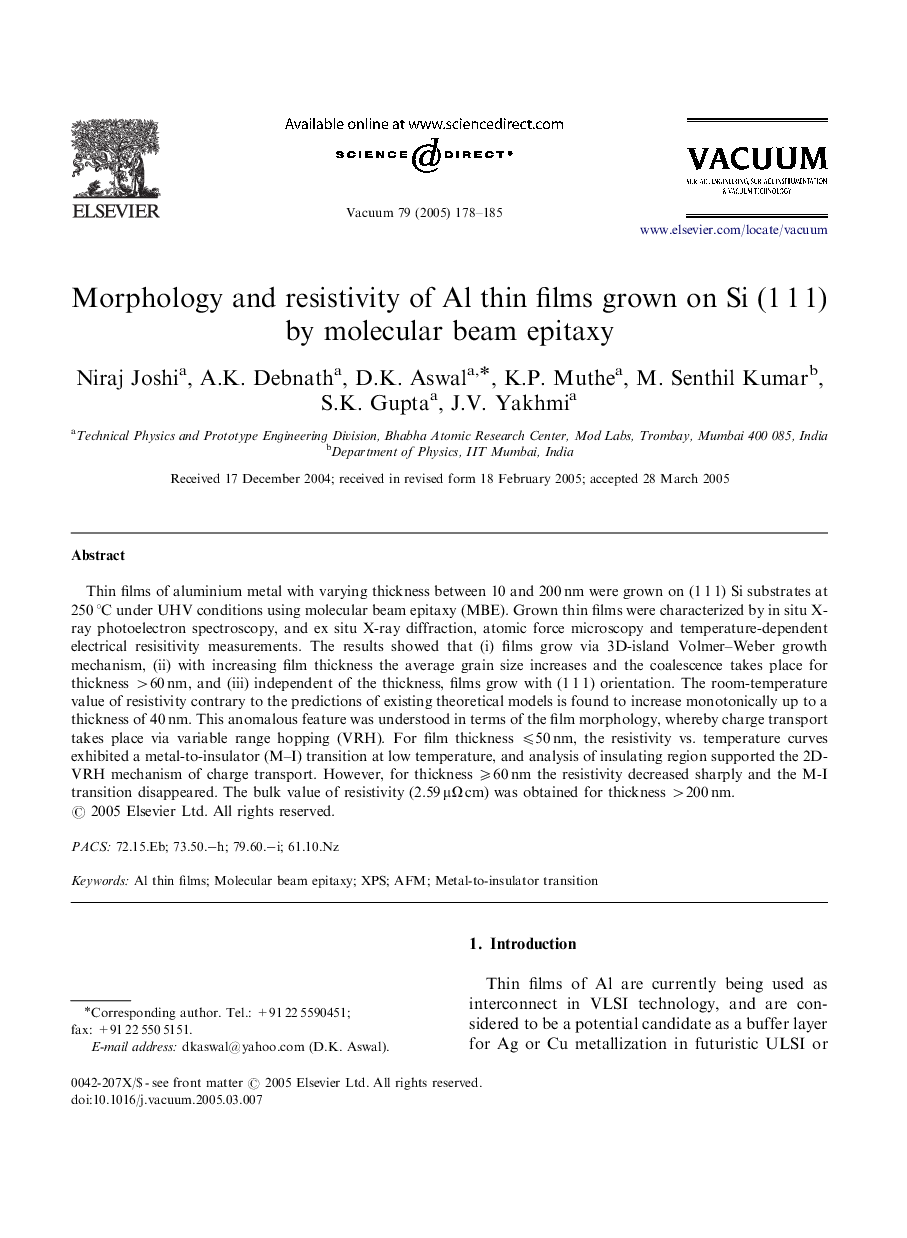| Article ID | Journal | Published Year | Pages | File Type |
|---|---|---|---|---|
| 9821528 | Vacuum | 2005 | 8 Pages |
Abstract
Thin films of aluminium metal with varying thickness between 10 and 200 nm were grown on (1 1 1) Si substrates at 250 °C under UHV conditions using molecular beam epitaxy (MBE). Grown thin films were characterized by in situ X-ray photoelectron spectroscopy, and ex situ X-ray diffraction, atomic force microscopy and temperature-dependent electrical resisitivity measurements. The results showed that (i) films grow via 3D-island Volmer-Weber growth mechanism, (ii) with increasing film thickness the average grain size increases and the coalescence takes place for thickness >60 nm, and (iii) independent of the thickness, films grow with (1 1 1) orientation. The room-temperature value of resistivity contrary to the predictions of existing theoretical models is found to increase monotonically up to a thickness of 40 nm. This anomalous feature was understood in terms of the film morphology, whereby charge transport takes place via variable range hopping (VRH). For film thickness ⩽50 nm, the resistivity vs. temperature curves exhibited a metal-to-insulator (M-I) transition at low temperature, and analysis of insulating region supported the 2D-VRH mechanism of charge transport. However, for thickness ⩾60 nm the resistivity decreased sharply and the M-I transition disappeared. The bulk value of resistivity (2.59 μΩ cm) was obtained for thickness >200 nm.
Keywords
Related Topics
Physical Sciences and Engineering
Materials Science
Surfaces, Coatings and Films
Authors
Niraj Joshi, A.K. Debnath, D.K. Aswal, K.P. Muthe, M. Senthil Kumar, S.K. Gupta, J.V. Yakhmi,
